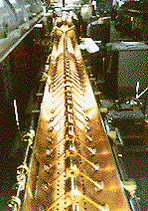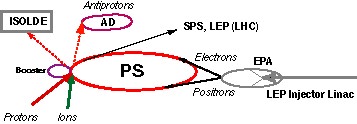
 |
The first stage of acceleration happens in a linear accelerator (Linac), and each type of particle has its own. This is because of their very different masses - a lead ion is about 200 times heavier than a proton, and almost 400,000 times heavier than an electron. The final energies are 500 MeV for electrons, 50 MeV for protons, and 4.2 MeV/nucleon for lead (Pb) ions. |
